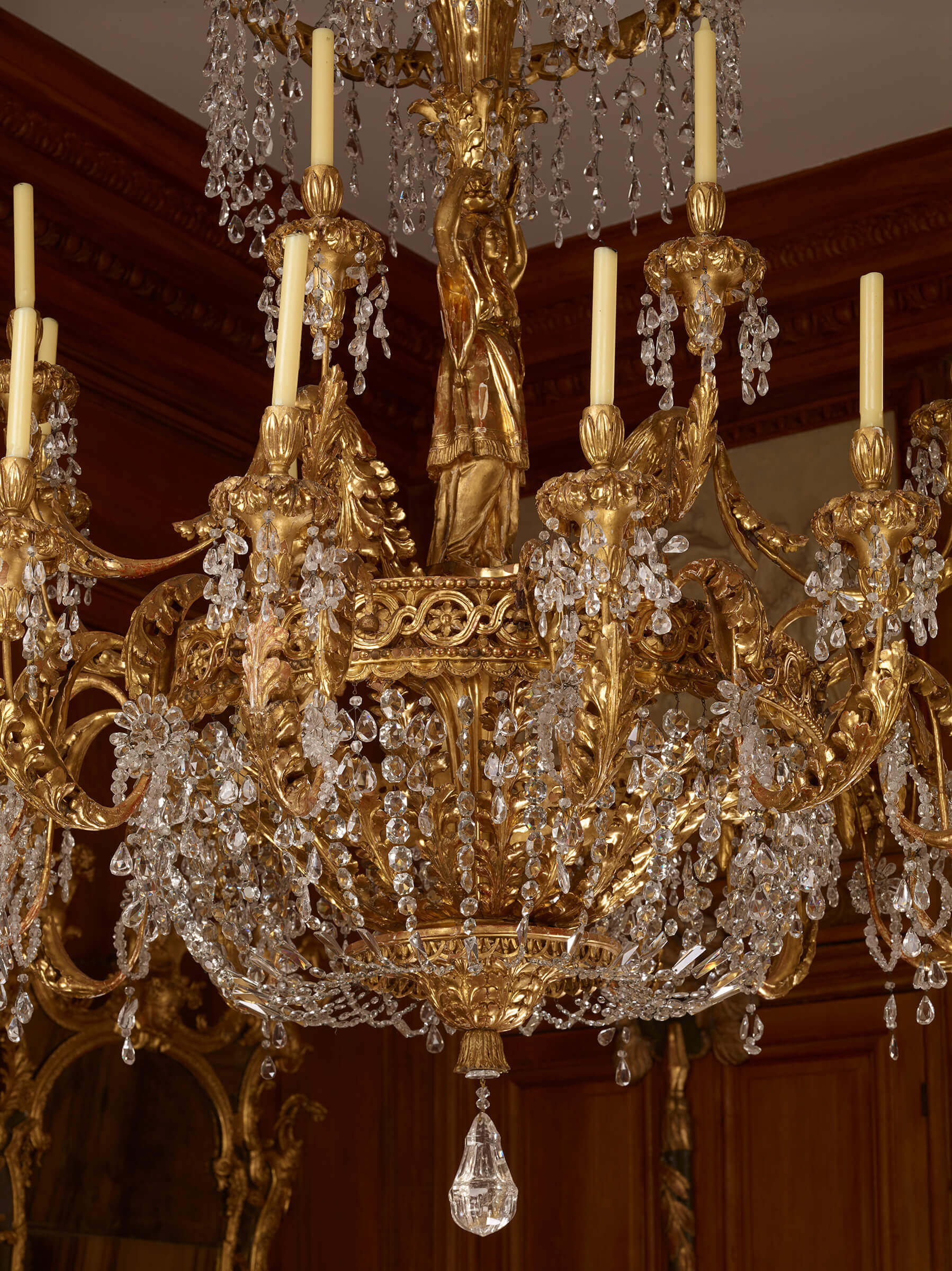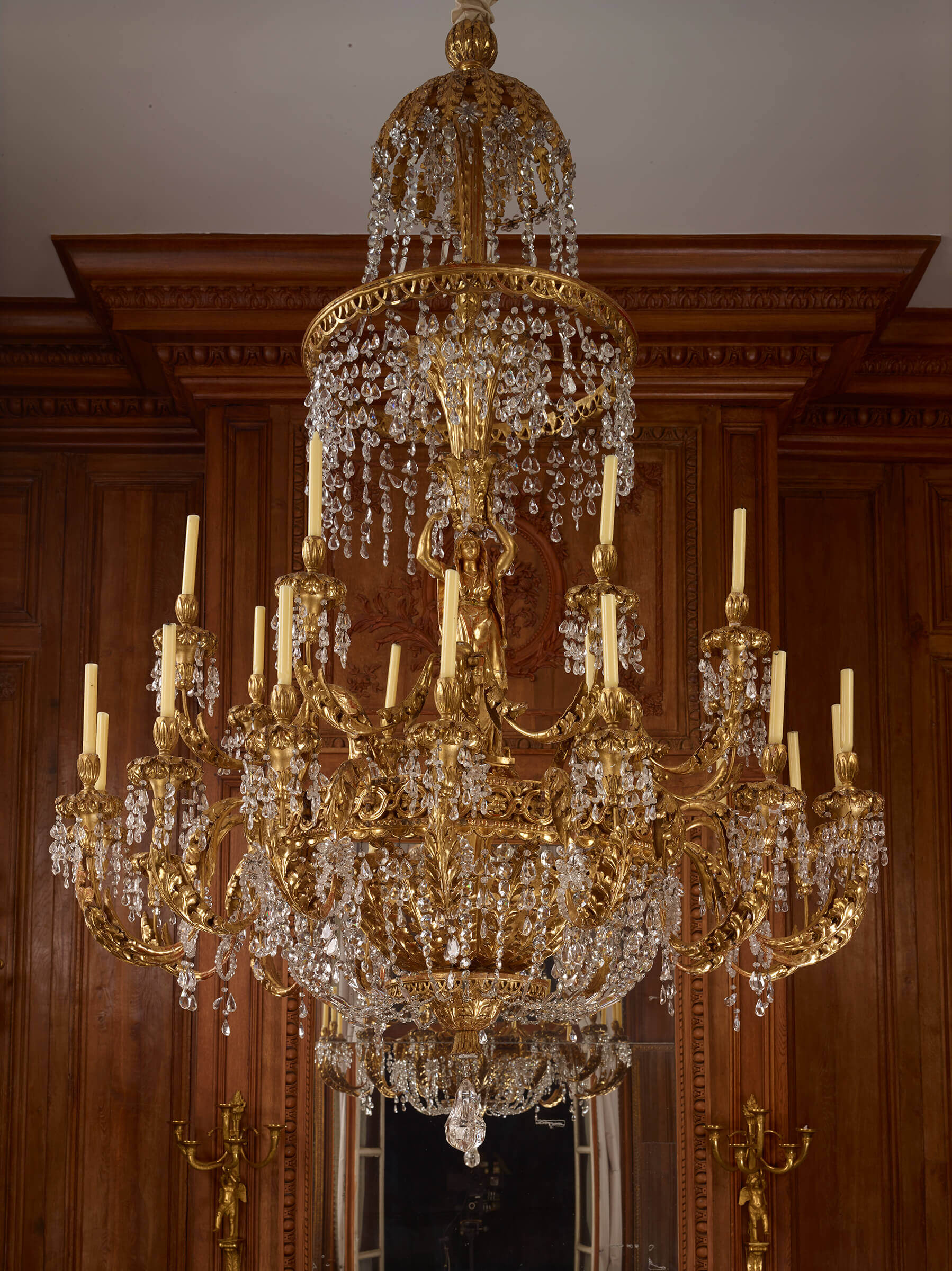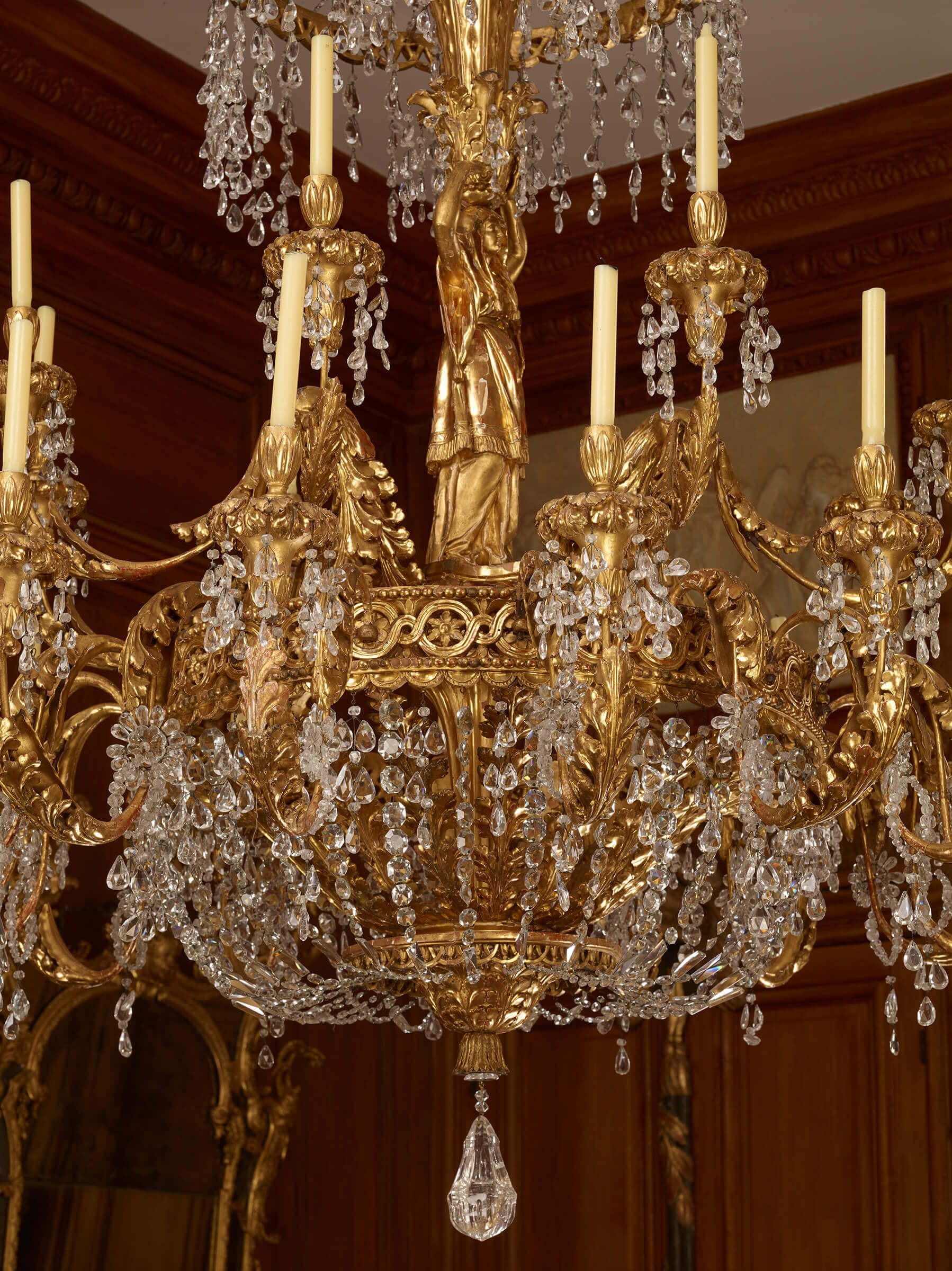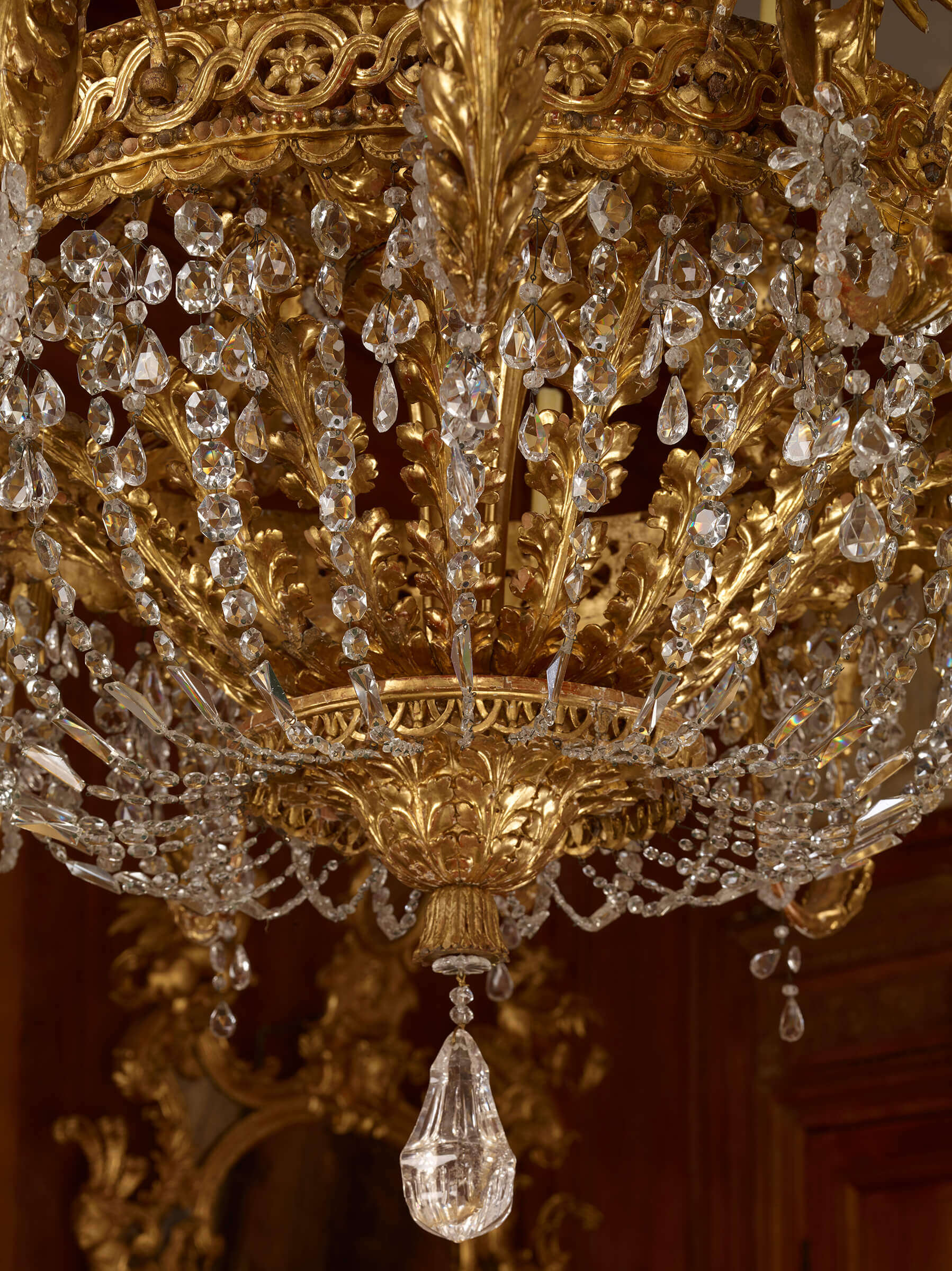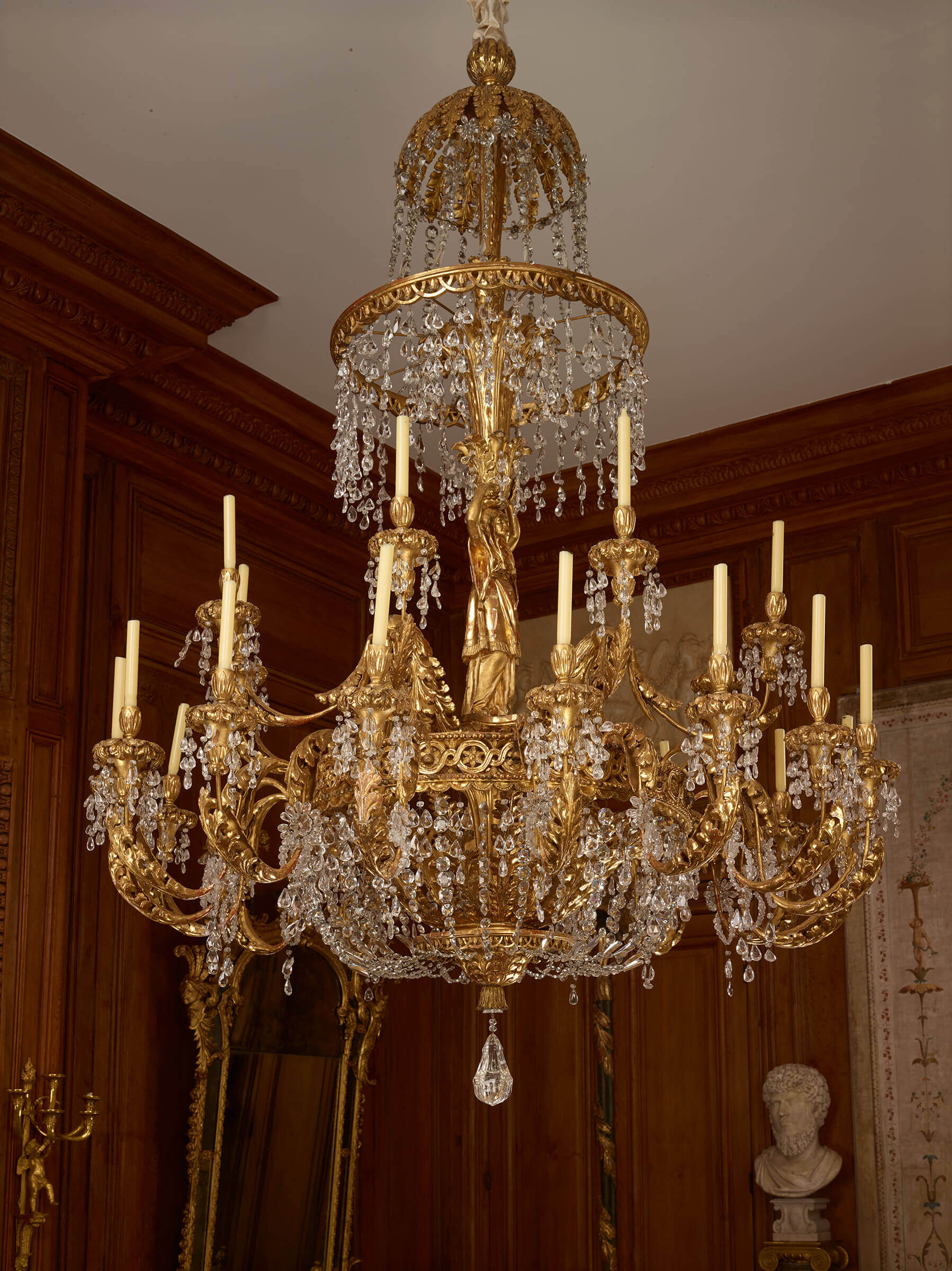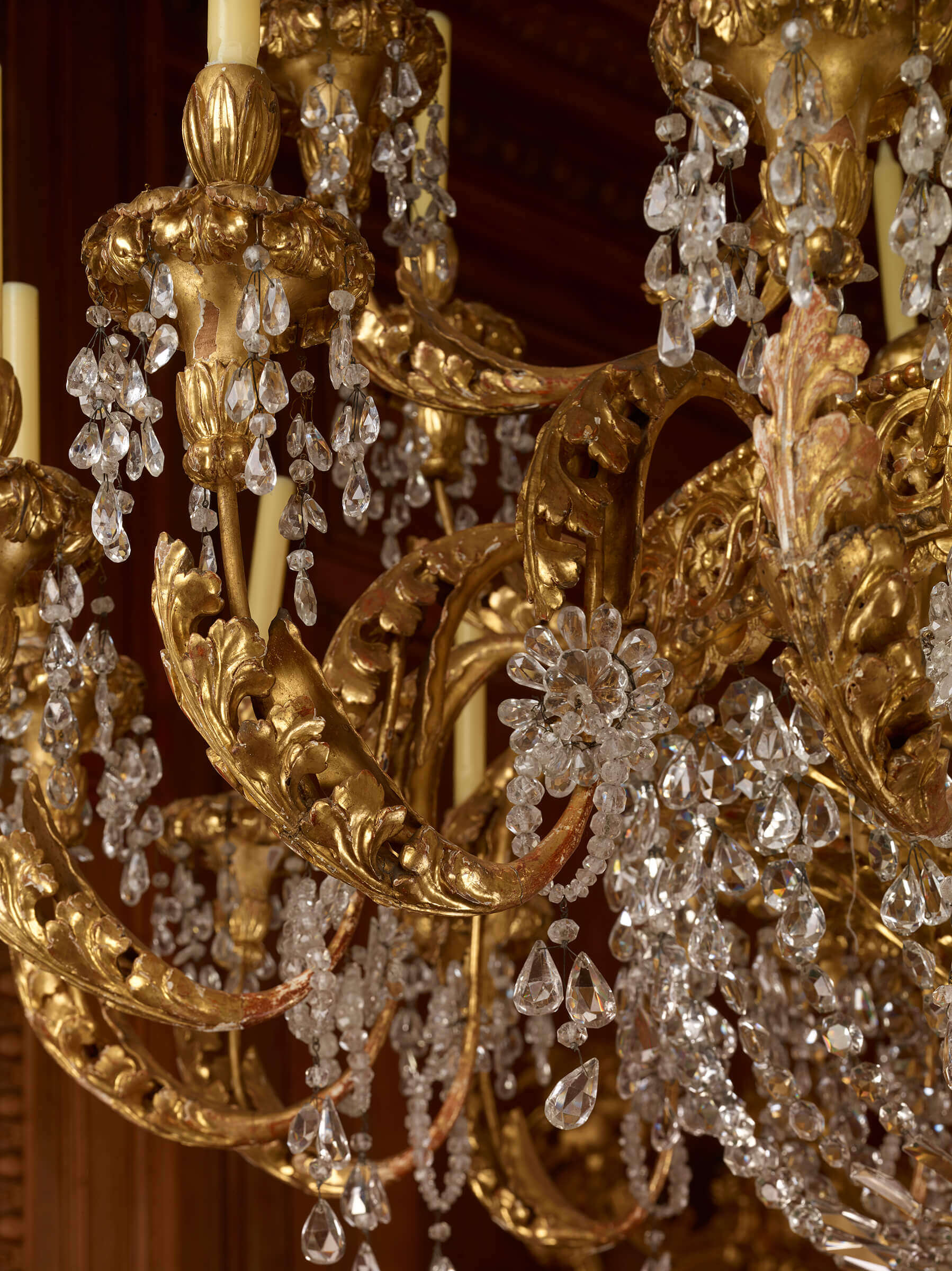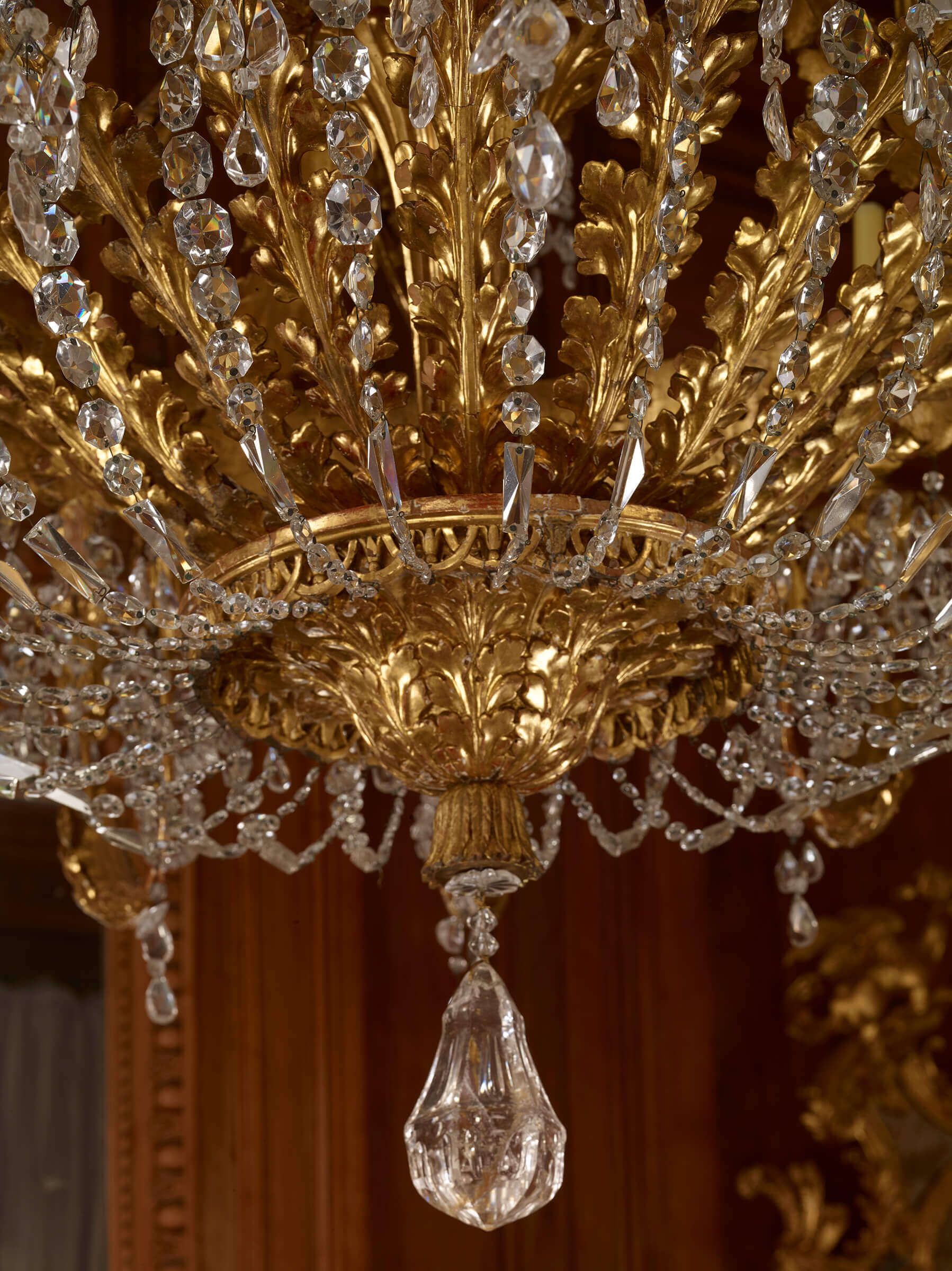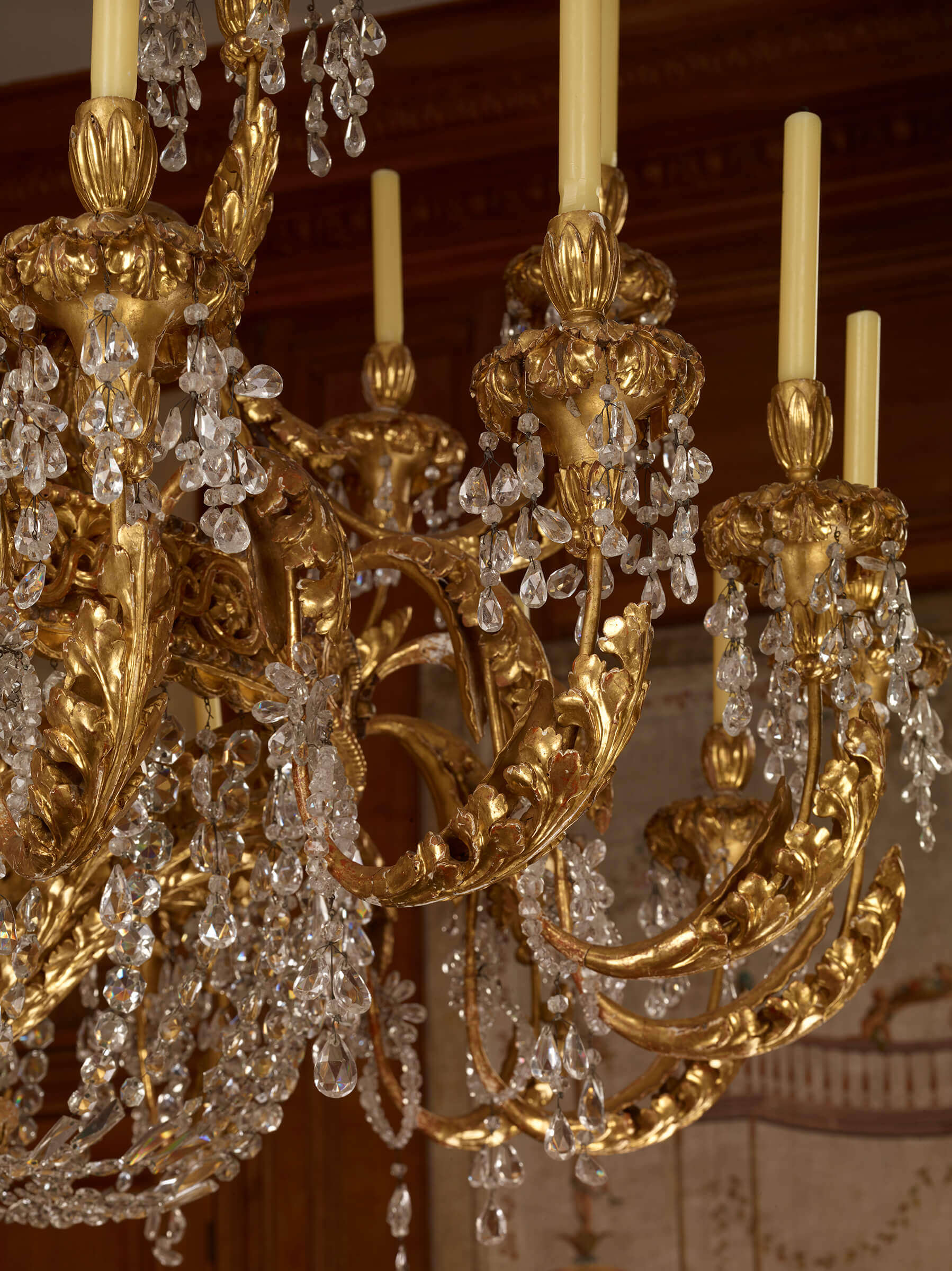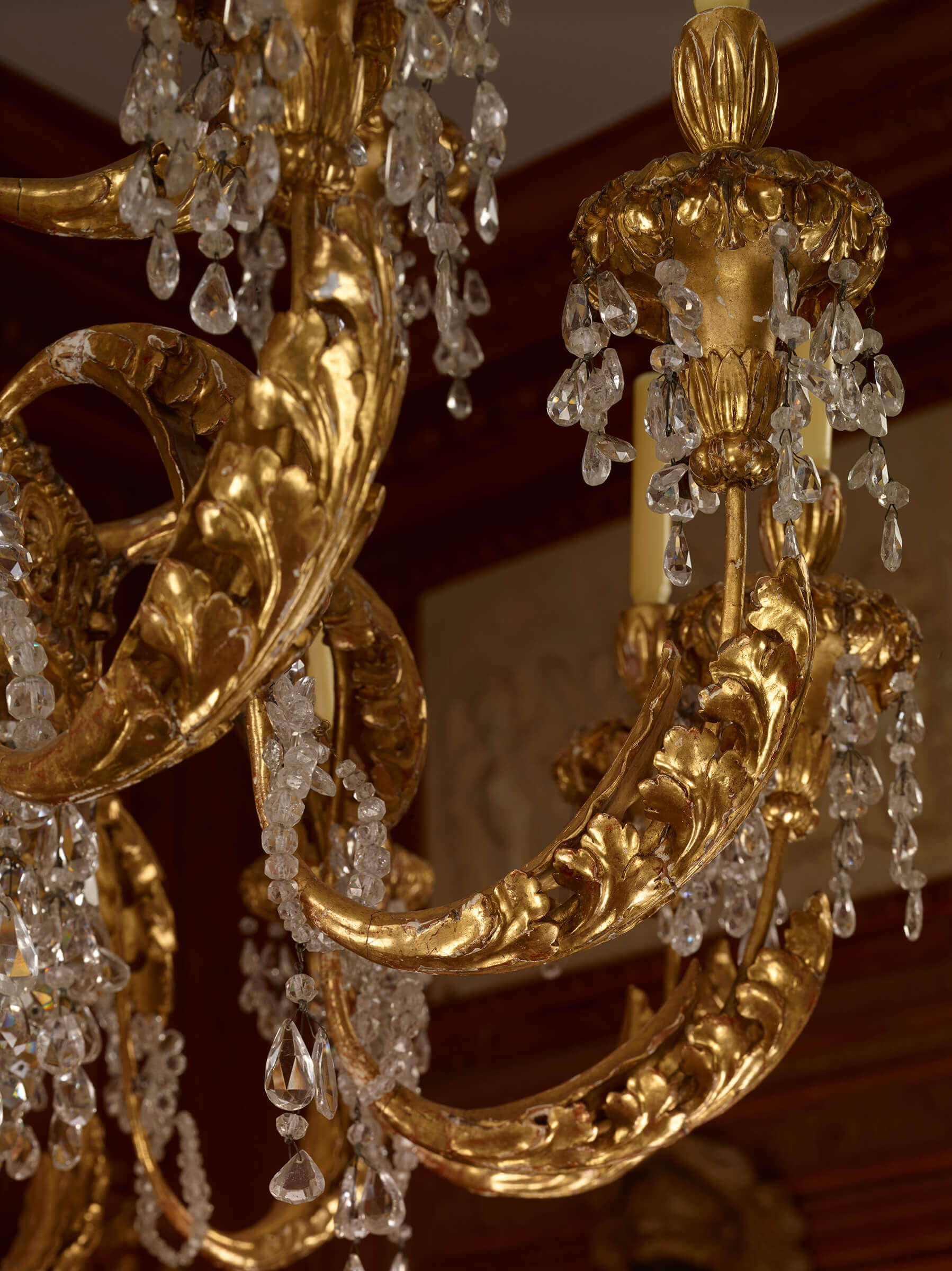

With a figure of a vestal in carved and gilted wood, and rock crystal.
Executed after drawings by Giocondo Albertolli (Bedano, 1742 – Milan, 1839).
Italy, Lombardy, Milan (?), Neoclassical period, circa 1780.
Carved and gilt wood, gilt metal, crystal and cut crystal rock.
H. 215 cm. (84 ¾ in.); D. 155 cm. (61 in.).
PROVENANCE: private collection, Italy.
LITERATURE: Giuseppe Beretti, Un lampadario su disegno di Giocondo Albertolli, Milan, 2014, fig. 1.
Albertolli trained at the Academy of Parma where he won prizes in 1766 and 1768. In 1774, Piermarini called him to Milan to decorate the interiors of the Royal Palace. The fruitful Piermarini-Albertolli collaboration continued with the Villa Reale of Monza, the Teatro della Scala and numerous patrician palaces of Milan: Belgiojoso, Greppi or Casnedi. Albertolli was, with Piermarini, the inventor of a very Italian taste for neoclassicism, made of sobriety, formal rectitude and didactic intention. This orientation matched the attitude of the Habsburg-Lorraine towards the Enlightenment and could easily be developed in the Milan of the Theresian period at the end of the 18th century. Through his cycles of decorative stuccos, his academic teachings and the clear plates of his albums, Albertolli became the instigator of a full maturation of Italian adorning, where architecture, decoration and furnishings interlocked. Albertolli responded with brio to the French archeological and eclectic taste, with a restrospective take on the tradition of the 16th century, seen as an alternative to the classical world. In this way, he constituted a selective répertoire in which the Antiquity, the Renaissance and nature could be integrated. Through his academic teachings, Albertolli completely influenced the Italian taste until the beginning of the 19th century, shaping an entire generation of artists via his innovative chair of ornamentation: from architects to cabinet-makers, by way of goldsmiths and embroiders.
